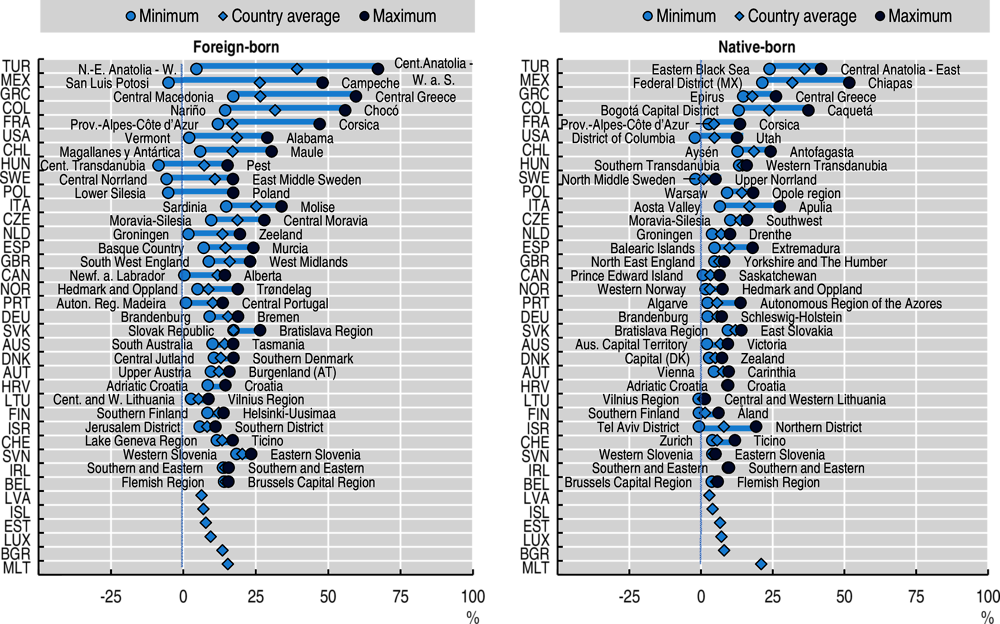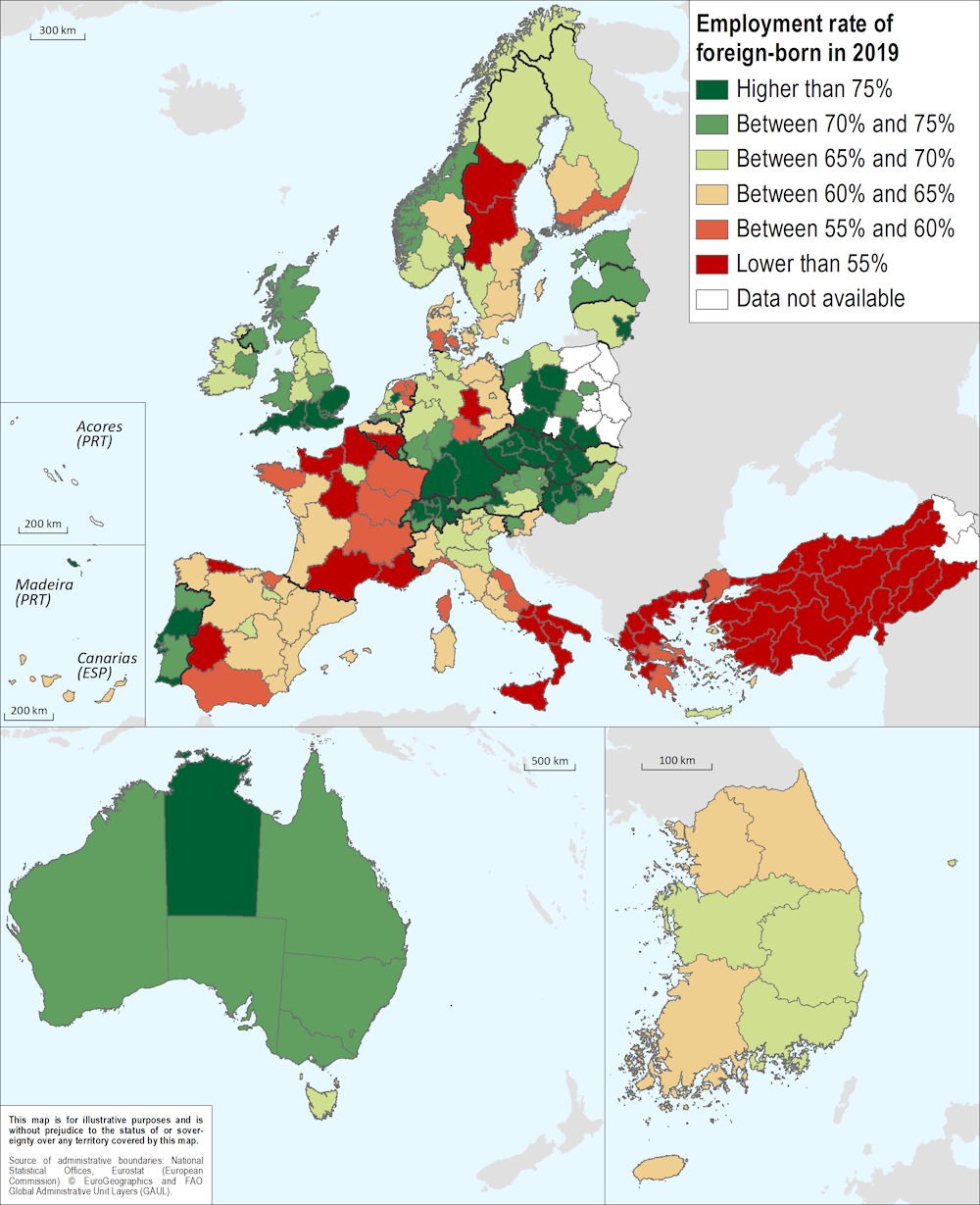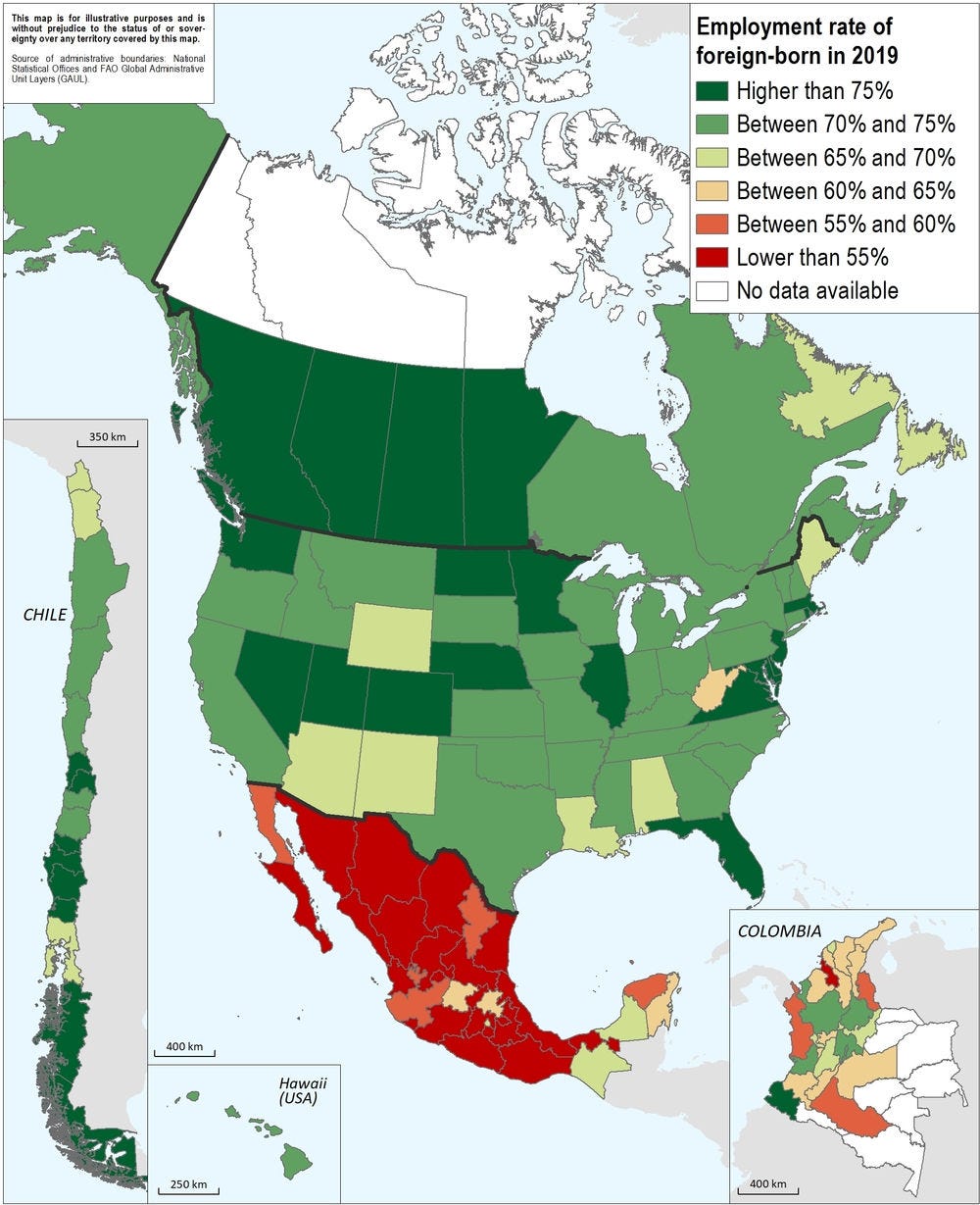The labour market integration of international migrants has been improving across OECD regions but significant challenges remain.
The integration of migrants into the labour market is of fundamental importance as it offers economic support and facilitates social and cultural integration. While migrant integration remains a significant challenge, with visible geographical variation across and especially within countries, most regions across OECD countries show significant improvements in migrant labour market integration during the last decade.
Despite the progress since 2015, migrant employment rates remain below that of native-born. On average, the employment rate of migrants increased by around 4 pp in OECD countries and by 3 pp in EU27 countries. Overall, the employment rate of migrants has improved, in almost three-quarters of regions (OECD, 2022). However, regional differences in employment rates persist within OECD countries (Figure 3.17), mainly driven by the low female employment rate, as discussed in the next section.
In general, OECD countries with low national employment rates for migrants also document the largest regional variations in migrants’ employment rates. For example, in Mexico and Türkiye, employment rates of migrants differ across regions by 36 and 33 pp respectively (Figures 3.19 and 3.20). However, there are also exceptions such as Germany and Hungary, with migrants’ national employment rates of 71% and 77%, that also report regional gaps of more than 20 pp or more.
Gender gaps are a significant obstacle to the integration of migrants across OECD regions. While the employment rate of male migrants and native-born is similar in most regions, differences for women are substantial. For instance, in 2019, the employment rate for female migrants was only 57% in OECD regions, compared to 74% for male migrants. Moreover, while the gender gap also exists for the native-born population (9 pp), that gap doubles for migrants (17 pp). While these differences result from complex factors, they may be explained by lower formal education or language proficiency for female migrants, cultural norms and restrictive work visa rules for spouses.




